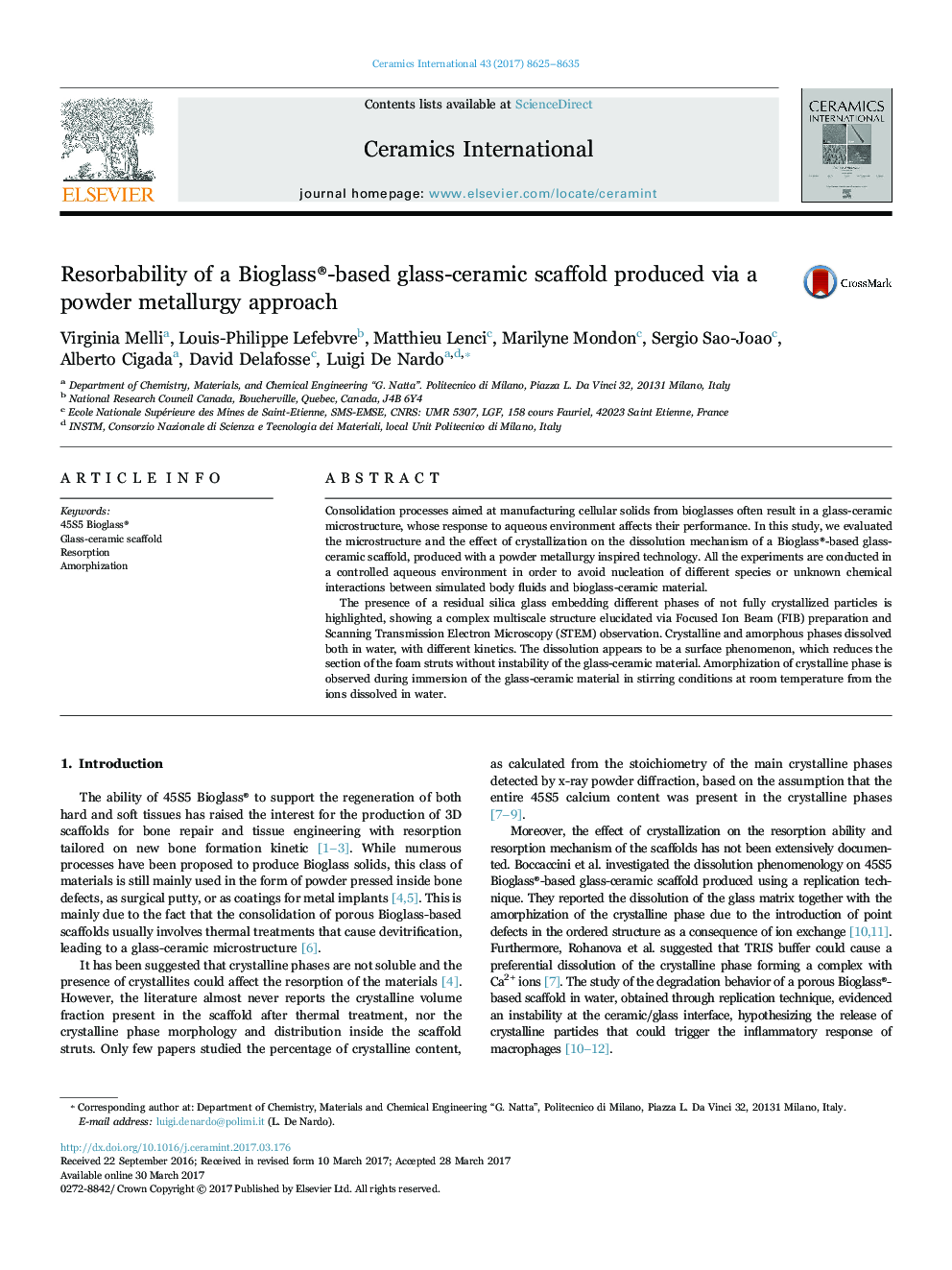| Article ID | Journal | Published Year | Pages | File Type |
|---|---|---|---|---|
| 5438319 | Ceramics International | 2017 | 11 Pages |
Consolidation processes aimed at manufacturing cellular solids from bioglasses often result in a glass-ceramic microstructure, whose response to aqueous environment affects their performance. In this study, we evaluated the microstructure and the effect of crystallization on the dissolution mechanism of a Bioglass®-based glass-ceramic scaffold, produced with a powder metallurgy inspired technology. All the experiments are conducted in a controlled aqueous environment in order to avoid nucleation of different species or unknown chemical interactions between simulated body fluids and bioglass-ceramic material.The presence of a residual silica glass embedding different phases of not fully crystallized particles is highlighted, showing a complex multiscale structure elucidated via Focused Ion Beam (FIB) preparation and Scanning Transmission Electron Microscopy (STEM) observation. Crystalline and amorphous phases dissolved both in water, with different kinetics. The dissolution appears to be a surface phenomenon, which reduces the section of the foam struts without instability of the glass-ceramic material. Amorphization of crystalline phase is observed during immersion of the glass-ceramic material in stirring conditions at room temperature from the ions dissolved in water.
